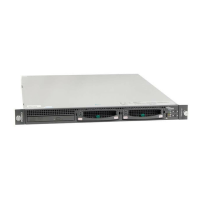
Do you have a question about the Fujitsu PRIMERGY RX200 S2 and is the answer not in the manual?
| Chipset | Intel 5000P |
|---|---|
| Network | Dual Gigabit Ethernet |
| Operating System Support | Windows Server, Linux |
| Processor | Intel Xeon processors |
| Memory Slots | 8 x DIMM |
| RAID Support | RAID 0, 1 |
| Power Supply | Redundant power supply |
| Form Factor | 1U rack server |
Details on the specific features and design of the PRIMERGY RX200 S2 server.
Overview of software provided with the server, including ServerStart for setup and maintenance.
Explanation of server component names and their functions, with front and rear views.
Procedures for standard server operations like opening rack doors and powering on/off.
A graphical workflow outlining the steps from server installation to starting operation.
Instructions for installing internal options and performing necessary hardware settings before OS installation.
Guidance on choosing between ServerStart installation, guided mode, or manual installation.
Important notes on partition sizes, RAID configuration, and LAN adapter setup for OS installation.
Steps to install ServerStart on a client computer for preconfiguration or driver disk creation.
Procedure for installing the OS using ServerStart's guided wizard for hardware and OS configuration.
Steps to set and save installation information in a configuration file on a client computer for server installation.
Using expert mode for OS installation, including disk manager and manual configuration.
Overview and methods for performing OS installation remotely using PXE or resource servers.
Using ServerStart to install the OS on multiple servers efficiently by editing configuration files.
Instructions for creating necessary driver installation disks using ServerStart's FloppyBuilder.
Step-by-step guide for manually installing Windows Server 2003 and Windows 2000 Server.
Procedure for installing LAN drivers for Windows Server 2003 and Windows 2000 Server.
Configuring memory dump settings for debugging and managing paging files for system performance.
Steps to create Automated System Recovery (ASR) sets for Windows Server 2003 and recovery disks for Win 2000.
Procedure for storing BIOS configuration information using Server Management Tools for recovery.
How to create DOS floppy disks and Hardware Configuration Tools using ServerStart's FloppyBuilder.
Important settings and notes before operating the server, including system updates and CD-ROM auto-run.
Details on advanced LAN driver setup using Intel® PROSet for Teaming and VLAN configuration.
Information on installing and using ServerView for server hardware monitoring and status checks.
Details on installing and using DSNAP for collecting failure investigation and server environment information.
Important precautions and warnings before installing or removing internal server options.
Procedure for safely removing and reattaching the server's top cover to access internal components.
Detailed steps for installing a CPU, including location, compatible CPUs, and handling precautions.
Guide on installing memory modules, including locations, compatible types, installation order, and identification.
Information on installing expansion cards, including PCI slot specifications and installable cards.
Procedure for installing an internal CD-ROM drive unit into the server's drive bay.
Steps for installing internal hard disk units into the server's 3.5-inch storage bays.
Details on installing, removing, and replacing power supply units, including installable models.
Information on replacing system fans, including fan numbers and the redundant fan function.
Examples of connecting external SCSI devices like backup cabinets and hard disk cabinets.
Details on jumper pin locations and their settings on the baseboard for system configuration.
Instructions on starting, exiting, and navigating the BIOS Setup Utility for system configuration.
Explanation of settings for the SCSI Setup Utility, including starting, exiting, and configuring adapters.
Procedures for checking server status using LEDs and ServerView, and cleaning the server interior and peripherals.
Guidance for resolving hardware problems, error messages, and software issues encountered with the server.
How to use Server Management Tools to view, save, and delete system event logs for diagnostics.
Information on hardware security, password protection, and secure server disposal to maintain data security.
Importance of backups, devices, software, and procedures for periodic data backups and media management.
Steps for restoring the system using recovery disks for Windows Server 2003 and Windows 2000 Server.
Procedure for reinstalling the OS, including checking devices, data deletion, and using ServerStart.
How to change OS settings after hardware modifications like CPU addition or Hyper-Threading changes.
Details on maintenance service, non-durable components, and contacting support for failures.
Notes on hard disk failure detection, baseboard replacement, and domain controller function usage.
Detailed specifications for the server, including CPU, memory, storage, expansion slots, and interfaces.
Specifications for internal options such as CPUs, memory modules, CD-ROM drives, and hard disk units.
Information on connecting the server to a PC for remote control and console redirection via RS-232C.
Instructions on how to properly dispose of the server, batteries, and LCD displays according to recycling regulations.
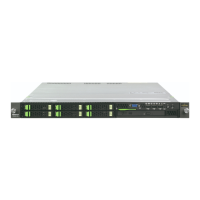
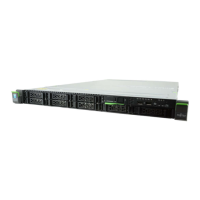
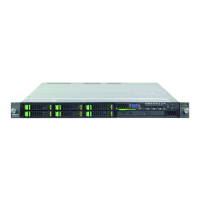

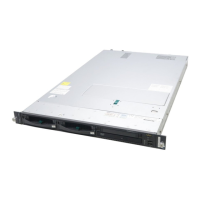
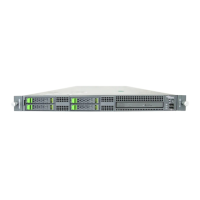
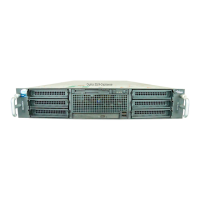


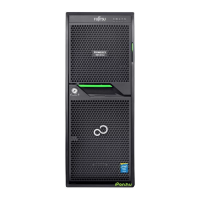

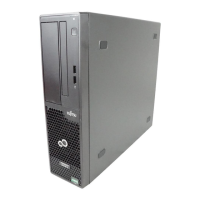
